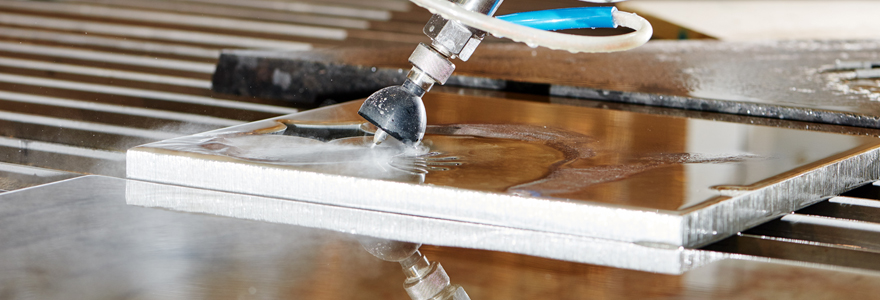Industrial slicing machines play a vital role in various industries, including food processing, packaging, and manufacturing. These machines are designed to efficiently slice and cut materials with precision and speed. However, the operation of these machines also poses inherent risks to operators and workers in the vicinity. In recent years, there has been a growing focus on enhancing safety measures and implementing innovative designs in industrial slicing machines to minimize accidents and prioritize worker safety. This article explores the latest advancements in industrial slicing machine design that prioritize safety, offering enhanced operator protection, integrated safety sensors, automatic blade stop mechanisms, emergency shutdown systems, and streamlined maintenance and cleaning processes. These innovations not only improve the overall safety of industrial slicing machines but also contribute to increased productivity and operational efficiency.
Enhanced Operator Protection
Ensuring the safety and well-being of operators is of paramount importance in industrial slicing machine design. Manufacturers have introduced various features to enhance operator protection. This includes the implementation of safety guards and shields around the slicing area to prevent accidental contact with the moving parts. Additionally, ergonomic design elements, such as anti-slip surfaces and comfortable handholds, have been incorporated to reduce the risk of operator fatigue and improve overall control during operation. Furthermore, the use of advanced safety interlocks and sensors helps in automatically halting the machine's operation if any unauthorized or unsafe access is detected, minimizing the potential for accidents and injuries. These enhancements not only safeguard the operators but also foster a safer working environment in industrial settings.
Integrated Safety Sensors
Integrated safety sensors are a key innovation in modern industrial slicing machine design. These sensors are strategically placed throughout the machine to detect any potential hazards or abnormalities during operation. They can monitor factors such as blade speed, vibration levels, temperature, and material feed to identify any deviations from normal operating conditions. In the event of a fault or danger, these sensors trigger immediate alerts or automatic shutdown mechanisms to prevent accidents. Additionally, some advanced slicing machines employ sensor technology that can detect the presence of foreign objects or fingers in the slicing area, instantly stopping the machine to avoid any harm. The integration of safety sensors adds an extra layer of protection and enables proactive hazard mitigation, ensuring the well-being of operators and minimizing the risk of accidents in industrial settings.
Automatic Blade Stop Mechanisms
Automatic blade stop mechanisms are a significant advancement in industrial slicing machine design, specifically aimed at reducing the risk of operator injuries. These mechanisms are designed to halt the slicing blade's movement instantaneously upon detection of a potential hazard. Using advanced technologies such as proximity sensors, optical sensors, or laser scanners, these mechanisms can quickly identify any objects or obstructions in the slicing area that could pose a danger. Once detected, the system triggers an automatic blade stop, preventing any contact between the operator or foreign objects and the rotating blade. This innovation provides an added layer of safety by minimizing the chances of accidents caused by human error or unforeseen circumstances, ensuring a safer working environment in industrial settings.
Emergency Shutdown Systems
Emergency shutdown systems are crucial in industrial slicing machine design to promptly respond to critical situations and prevent accidents. These systems are equipped with easily accessible emergency stop buttons or switches that, when activated, initiate an immediate shutdown of the machine's operation. In case of an emergency, such as a malfunction, equipment failure, or a hazardous situation, operators can quickly and effectively halt the machine, mitigating potential risks. Furthermore, some advanced slicing machines are integrated with automated emergency shutdown features that can detect abnormal conditions, excessive vibrations, or power failures, and trigger an automatic shutdown to safeguard both operators and the surrounding environment. The incorporation of emergency shutdown systems adds a vital safety measure to industrial slicing machines, enabling swift action in critical situations and reducing the likelihood of accidents or injuries.
Streamlined Maintenance and Cleaning Processes
Efficient maintenance and cleaning processes are essential for ensuring the safe and smooth operation of industrial slicing machines. Manufacturers have introduced innovative designs and features to streamline these tasks and minimize potential risks during maintenance and cleaning procedures. For instance, some slicing machines now have quick-release mechanisms that allow for easy removal and replacement of parts, reducing the time and effort required for maintenance. Additionally, self-cleaning systems or features like removable covers and panels facilitate thorough cleaning of the machine, preventing the accumulation of debris and reducing the risk of contamination. Moreover, advancements in materials used in machine construction, such as corrosion-resistant coatings or easy-to-clean surfaces, further simplify the cleaning process. By optimizing maintenance and cleaning procedures, industrial slicing machines promote safety by minimizing downtime, enhancing equipment longevity, and ensuring a clean and hygienic working environment.
